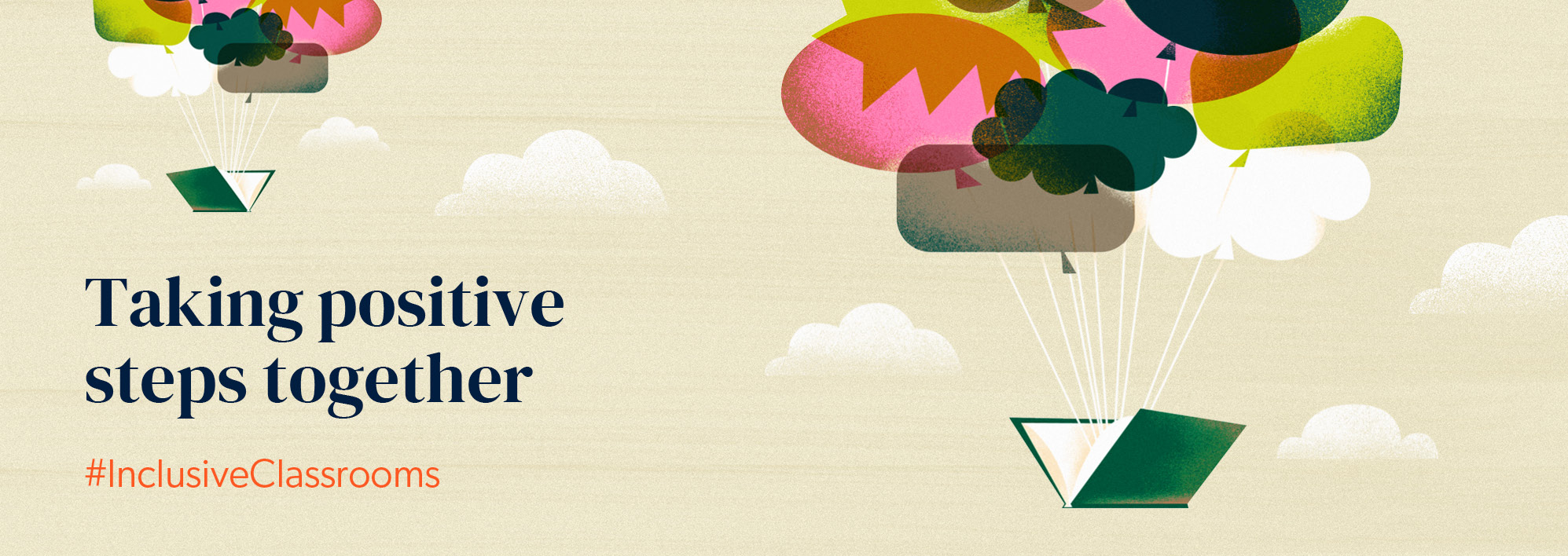I am the head of MFL and a member of the research team in a large semi-rural comprehensive on the south coast. We have a very inclusive and affirming city environment, and a diverse and colourful student and staff population. Since 2018 we have run a weekly LGBTQ+ club (even somehow maintaining a presence during the periods of lockdown and the post-pandemic “bubbles”). Our group has developed from a half-termly event tucked away in a more “discreet” area of the school to a noisy, energetic and very welcoming weekly meeting held in the very centre of the main building. On average, the group welcomes 40 students from Y7-11, and 10-15 staff.
We work hard to foster an inclusive environment across the school, so I will share 4 strategies which have been successful in recent years. They may seem obvious, but their potential impact on the wellbeing of LGBTQ+ students, staff and members of the wider school community, cannot be underestimated.
1. An open door
My door as (unofficial) LGBTQ+ lead is always open. Students are encouraged to share their positive experiences, and to report any issues of homo/bi/transphobia that they have witnessed or of which they have been a victim. ALL students benefit from an adult with whom they have a secure, caring and non-judgemental relationship, to improve their mental health and give them a truly safe space within one which can seem scary and intimidating (high school!!) As an MFL teacher, my open door means I build relationships with students I know well, but also those whom I may otherwise have never had in my classroom, and I love the wider perspective it gives me on the school community in general.
2. Clarity
In 2018 I led a series of assemblies to make it very clear that homo/bi/transphobic language would not be accepted in our school, and in coming out to all the students, gave this message a personal “face”. This reduced incidences of problematic behaviour significantly, and during lockdown I produced a video version of a similar assembly, this time using the faces and stories of my LGBTQ+ friends and acquaintances to expand the range of real LGBTQ+ people that our students saw. This summer we are running the assemblies again for Pride month, and for the first time I have a crew of incredibly brave students to help me out.
3. Normalising LGBTQ+ discussion
Over the past 3 years we’ve worked to have Stonewall posters and Allsorts (a Brighton-based LGBTQ+ youth charity) posters around the school, as well as giving students and staff pronoun badges, encouraging staff to put their pronouns in their email signatures and adding references to LGBTQ+ people and situations in lessons across the curriculum. For example, our MFL classrooms have displays showing how different languages tackle the use of gender-neutral pronouns. Most recently, a year 10 student designed a super logo for our club, which we have used to create button badges. Staff and students are very proudly sporting these across the school, showing allyship, community and inclusion.
4. Targeted education
My role in our LGBTQ+ provision is not an official job title, but nonetheless I tend to be the “go to” for any LGBTQ+ related questions or concerns, and I have to admit I love it (even though it can be a big emotional labour at times). A high proportion of LGBTQ+ issues which occur around the school land on my plate, and this allows me to strategise with year teams to educate and (where necessary) sanction students who have behaved inappropriately. We meet 1-2-1 with the student to deliver a clear message that homo/bi/transphobia is not an opinion, outline the laws around it, and discuss the impact. I always end these meetings with the same message – “You’ve made a mistake, and now you know better. Now you know better, you need to do better (thanks Maya Angelou). You need to be an ally to the community, and you need to educate others and support us all.”
No matter your position on the LGBTQ+ spectrum or your level of “out-ness”, you can make an enormous difference in the lives of the young people in a school by taking any step to be inclusive and welcoming in an educational environment. I recall my own school days during Section 28, and when I compare that to what students experience now, it’s as different as it could possibly be. Just like everything we do in education, it’s the smallest actions which can make the biggest difference.
Pam Stallard is head of MFL at Longhill High School in Rottingdean, a suburb of Brighton, where she has worked since 2014. A passionate educator who engages with education research and discussion on Twitter @stallardlhs, Pam runs a weekly LGBTQ+ group, and is the first point of contact at Longhill for most students who need support with anything related to gender and sexuality. She teaches French and Spanish, as well as speaking a smattering of Italian and loves to travel, even if she doesn’t speak the language of the country she’s travelling to!

